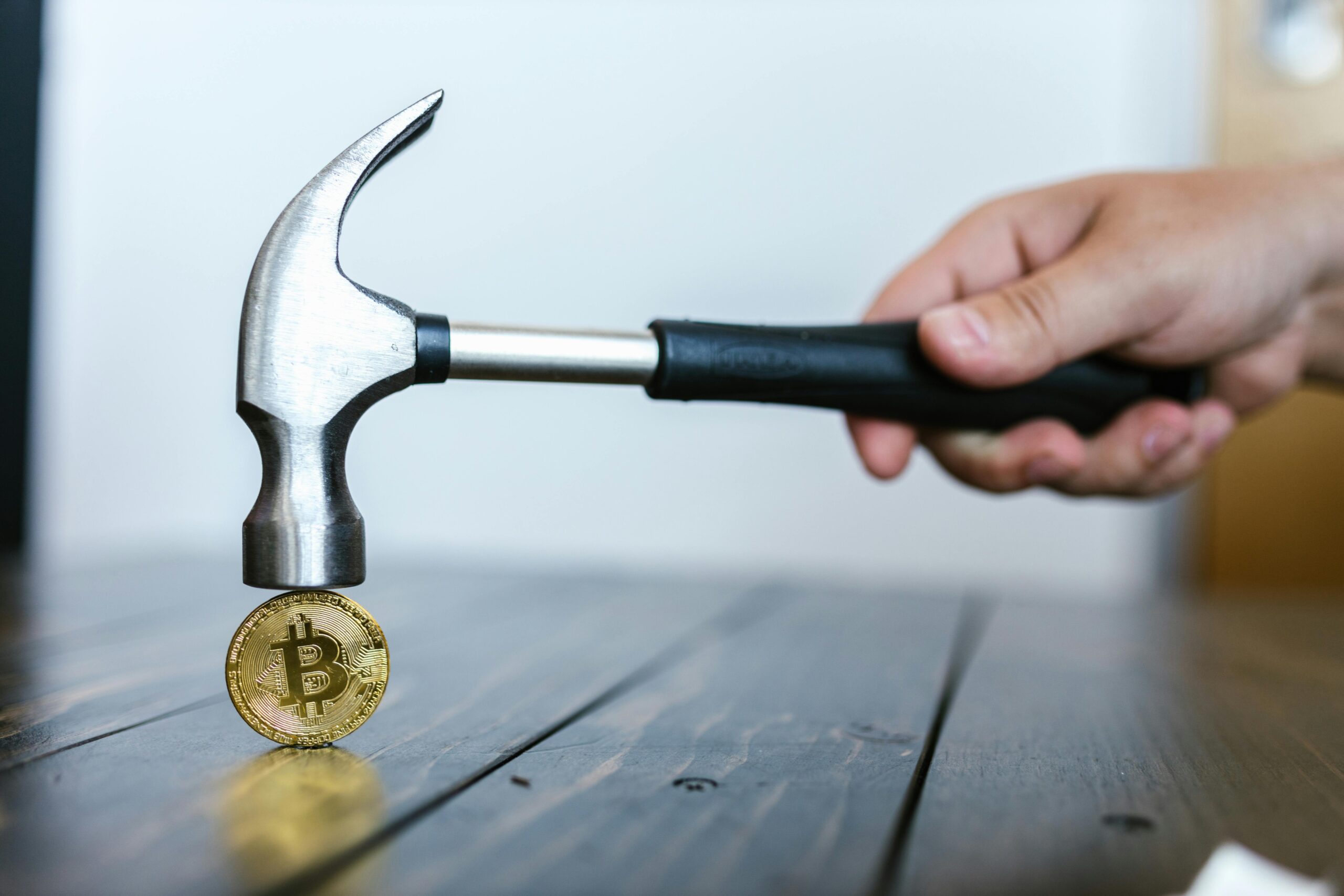

Mining Knowledge for the Crypto Curious
One Miner’s Journey. Everyone’s Resource.
Real Mining. Real Stories. Real Results.
Custom Mining Rig
Build the perfect setup for your goals and budget.
Wallet & Security Setup
Get your crypto off exchanges and into your control.
Cloud Mining & Profitability Coaching
Let’s find the best cloud mining path.
Mining Pool Setup & Optimization
Join the right pool — mine smarter with better payouts.
The Miner’s Blog Built by a Miner
- Maximizing Mining Efficiency and Profitability: Lessons from My Rigs
 by Gary
by GaryIf you’re anything like me, you probably started mining thinking it was just plug and play. Set up the rig, press go, and watch the crypto roll in, right? Yeah… not quite. What I quickly learned — sometimes the hard way — is that mining profitability isn’t just about hashrate or the latest gear. It’s about squeezing every bit of efficiency out of your setup.
Over the years, I’ve gone from running a single GPU in my garage to managing a small but optimized farm. And along the way, I’ve picked up a ton of tricks, tips, and hard-earned lessons. If you’re mining or planning to start, here’s how I’ve maximized my mining efficiency — and stayed profitable, even when the markets dipped.
1. Hardware: It’s Not Just About Power, It’s About Balance
Sure, everyone wants the latest GPUs or ASICs with monster hash rates. But high-end gear also pulls more power, generates more heat, and needs better airflow — all of which impact your bottom line.
When I started, I made the rookie mistake of going all-in on the highest-end GPUs I could afford. They were beasts… but my electric bill was worse.
Now I take a more measured approach. I balance performance with power efficiency (watts per MH/s). Sometimes a slightly older GPU with lower power draw and better ROI beats the flashy new card. Sites like WhatToMine help you compare hardware performance and profitability in real time.
2. Undervolting = Hidden Profit
One of the biggest game changers for me was learning to undervolt my GPUs. Out of the box, your card is usually running at higher voltages than it needs. By lowering the voltage while maintaining hashrate, you reduce power usage and heat — which means more profit and a longer lifespan for your gear.
I use tools like MSI Afterburner and Hive OS to tweak voltages and fan curves. It takes a bit of trial and error, but the results are worth it. I’ve seen 20–30% improvements in efficiency just by fine-tuning settings.
3. Stay Cool (Literally)
Heat is the silent killer of mining operations. Not only does it degrade your hardware over time, but it also causes throttling, which means less performance and more electricity wasted.
Early on, I had rigs overheating constantly — I’d walk into the garage and feel like I opened the door to a pizza oven. I’ve since upgraded to better airflow, positioned rigs strategically, and even experimented with open-frame rigs and custom fans.
For some setups, I even switched to mining at night during the cooler hours to reduce cooling costs. It sounds extreme, but it helps when every degree counts.
4. Electricity: Know Your Rates and Play Smart
Electricity is your biggest recurring cost. Period. If you’re paying standard residential rates (like I was in the beginning), you’re probably operating on thin margins.
I recommend:
- Mining during off-peak hours, if you’re on a time-of-use plan
- Checking local and regional providers — sometimes you can switch to cheaper commercial rates
- Using a kill-a-watt meter to measure your actual consumption — don’t just guess
Eventually, I moved my main rigs to a space with cheaper electricity. It made a huge difference in monthly profits.
5. Choose the Right Coin at the Right Time
Don’t get stuck only mining Bitcoin or Ethereum (especially now that ETH has gone Proof-of-Stake). I’ve made more in some months mining lesser-known altcoins and swapping them for BTC later.
Tools I use:
- WhatToMine.com – compare profitability across coins
- NiceHash – lets you mine the most profitable coin and get paid in BTC
- MiningPoolStats.stream – see pool stats and block production in real-time
Being flexible with what you mine can drastically improve profits — especially when difficulty spikes or network rewards shift.
6. Maintenance Matters
Dust is a miner’s enemy. I clean my rigs once a month, check thermal paste every 6–12 months, and monitor temps constantly.
I also keep logs of downtime, reboots, and hash rate changes. It might seem overkill, but catching issues early — like a failing fan or overheating memory — saves way more money than it costs in time.
Final Thoughts: It’s a Marathon, Not a Sprint
When I started, I was chasing short-term gains. Now I focus on sustainable mining — optimizing efficiency, lowering costs, and mining coins I believe in long-term.
Mining profitability will always ebb and flow with the market. But if you treat it like a business — monitoring power usage, optimizing performance, and protecting your gear — you’ll stay ahead of the curve, even when others are switching off.
Stay sharp, stay cool, and keep mining smart.
- Setting Up a Wallet: Cold vs Hot Storage (And Why I Use Both)
 by Gary
by GaryWhen I first got into crypto, I had no idea what a wallet even was. I figured, “Hey, I’ve got my coins on the exchange, I’m good.” Big mistake.
Fast forward a few months — I’d mined a decent amount of crypto, made some lucky trades, and was feeling good… until one of the exchanges I was using suddenly froze withdrawals. My coins? Gone, or at least stuck in limbo. That’s when I realized that if you don’t own your keys, you don’t own your crypto.
So let’s talk wallets. Specifically, the two main types: hot wallets and cold wallets — what they are, how to set them up, and why I now use both in my crypto mining and investing life.
What Is a Wallet, Really?
A crypto wallet isn’t like the leather one in your back pocket. It doesn’t hold your actual coins — what it holds is your private keys, which give you access to your crypto on the blockchain.
Lose those keys? You’ve basically lost your funds.
There are two main types of wallets you’ll hear about:
- Hot Wallets – Connected to the internet (more convenient, but riskier)
- Cold Wallets – Offline and physically secured (less convenient, but way safer)
Let’s dig into each.
Hot Wallets: Convenience at a Cost
A hot wallet is any wallet that’s connected to the internet. Think mobile apps, desktop wallets, browser extensions, or even exchange wallets (though I don’t recommend storing coins on exchanges long-term).
When I first started mining, I used wallets like Exodus, Trust Wallet, and MetaMask. They’re free, easy to set up, and let you send/receive crypto instantly.
Why hot wallets are great:
- Super easy to set up and use
- Ideal for daily transactions and small balances
- Support for a wide range of coins and tokens
- Some even let you stake directly from the wallet
But here’s the catch:
Because they’re online, hot wallets are vulnerable to hacks, phishing, and malware. If your phone or laptop gets compromised, someone could drain your funds in minutes.It’s kind of like carrying cash in your front pocket. It’s quick to use, but you wouldn’t keep your life savings there, right?
Cold Wallets: Safety First
Cold wallets are offline storage solutions — usually hardware devices like Ledger or Trezor, or even a paper wallet printed and stored in a safe place. Since they aren’t connected to the internet, they’re basically unhackable (as long as you don’t lose them).
I moved to cold storage after that first scare with the frozen exchange. I bought a Ledger Nano X, set it up, and moved most of my mined Bitcoin and Ethereum over. It was a learning curve, but totally worth the peace of mind.
Why cold wallets rock:
- Your private keys never touch the internet
- Great for long-term holders and miners
- Immune to most forms of online hacking
- Secure backup and recovery options
The only downside? It’s not super convenient for day-to-day transactions. You usually need to plug in the device, authorize the transaction manually, and sync with a companion app. But that extra effort? It’s a good thing when you’re securing thousands of dollars (or more) in crypto.
How I Set Up My Wallets (And You Can Too)
For Hot Wallets:
- Download a trusted wallet app (Exodus, Trust Wallet, MetaMask, etc.)
- Write down the seed phrase and store it offline (never screenshot it)
- Enable 2FA if possible
- Only keep small amounts in it — enough for trading or quick spending
For Cold Wallets:
- Order from the manufacturer’s official site (to avoid tampered devices)
- Set it up offline and write down your seed phrase securely
- Use the companion software (like Ledger Live) to manage transactions
- Store the device and seed phrase in separate, secure places (think safe or bank deposit box)
Bonus tip: Test your cold wallet with a small transaction first. Make sure everything’s working before transferring large amounts.
So Which One Should You Use?
Honestly? Use both — that’s what I do.
I keep a small amount of crypto in a hot wallet for convenience: trading, gas fees, and experimenting with DeFi protocols. Everything else — my mined coins, long-term holds, and serious investments — lives safely in cold storage.
Think of it like your bank accounts:
- Hot wallet = your checking account
- Cold wallet = your vault or savings account
This combo gives you the best of both worlds: security and usability.
Final Thoughts
If you’re just getting started, a hot wallet is fine for dipping your toes in. But if you’re mining regularly, buying larger amounts, or planning to hold for the long haul, cold storage is non-negotiable.
Trust me — you don’t want to learn that the hard way, like I did.
Need help choosing a wallet or setting one up? I’ve got more step-by-step guides coming soon. Until then — stay safe, back up those keys, and protect your stack.
- How to Start Cloud Mining (and Is It Worth It?)
 by Gary
by GaryI’ll be honest — when I first heard about cloud mining, I was skeptical. As someone who built rigs from scratch in a sweaty garage and spent months fine-tuning every fan, power draw, and hash rate, the idea of mining without hardware sounded… off. But curiosity got the better of me, and over time, I decided to dig in, test the waters, and see if cloud mining was truly worth it.
So here’s my experience — a guide for beginners, a warning for the overly optimistic, and maybe a nudge for those who just want to mine without dealing with heat, noise, or hardware costs.
What Is Cloud Mining?
At its core, cloud mining is renting mining hardware owned and operated by someone else — usually a large company that runs mining farms. You pay a fee (either upfront or ongoing), and in return, you earn a share of the mined crypto based on the hashing power you “lease.”
No rigs. No wires. No worries about hardware breaking down or electricity bills soaring. Sounds great, right?
Well… sort of.
How I Got Started
I started small — about $100 on a contract with a cloud mining provider that offered Bitcoin mining with daily payouts. The sign-up process was quick: pick a plan, enter wallet info, and boom — I was mining within minutes.
But I quickly learned that not all providers are equal. Some offer flexible contracts, while others lock you in for years. Some let you mine different coins, others only support Bitcoin. And let’s not forget the shady ones — sites that look slick but vanish with your money.
That’s why doing research is crucial. Look for providers that are:
- Transparent about fees and payouts
- Backed by real data centers (bonus if they post videos or live stats)
- Well-reviewed by the community (check Reddit, Trustpilot, and forums)
Is It Profitable?
This is the question everyone asks, and honestly — it depends.
Cloud mining won’t make you rich overnight. The return on investment is often slow, especially with low-tier plans. You’re also betting that the coin you’re mining will rise in value, since mining rewards decrease over time (thanks to difficulty adjustments and halvings).
In my case, I barely broke even on my first contract. But I learned a lot, and I’ve since tried other platforms with better results — mostly by waiting for market dips and locking in contracts when mining difficulty was lower.
Pros of Cloud Mining
- No hardware headaches – No setup, maintenance, or risk of equipment failure
- Lower barrier to entry – Start mining for as little as $50
- Great for learning – A hands-on way to understand how mining works
Cons of Cloud Mining
- Scams are real – Stick to reputable providers only
- Lower returns – You’re paying for convenience, so margins are thinner
- No control over hardware – If the provider shuts down, you’re out of luck
My Advice?
If you’re just starting out and want to learn how mining works — cloud mining can be a low-stakes entry point. Just don’t throw in more money than you’re willing to lose. Start small, test the waters, and track your payouts.
If you’re a more serious miner? Use cloud mining to diversify. Maybe you don’t want to buy new hardware for a coin that might take off. Renting hashpower lets you hedge your bets.
Final Thoughts
For me, cloud mining isn’t a replacement for physical rigs — it’s a complement. It won’t replace the thrill of building a setup with your own hands, but it is a way to stay involved, test new coins, or earn passive income while you sleep.
As always in crypto: DYOR (do your own research), avoid FOMO, and only invest what you can afford to lose. If you want to dive deeper into the platforms I’ve tried (and the ones I avoid like the plague), check out my full guide [here].
Until then — happy mining.
